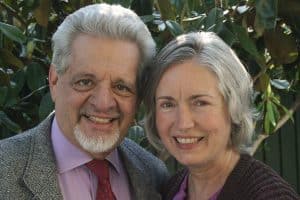Interview mit Carol-Ann Ericson
Lisa Wennekes spoke with Carol Ann about the background of her seminars at the IKL.
March 4 and 5: Rhythmic Movement Training 1
March 6 and 7: Dynamic Performance in Sports
March 8: Active Learning Workshop
Part 1: About Kinesiology in sports
Lisa: 2 Years ago you were with us for the OBO teacher training and I remember us sitting around you on the couch and glued to your lips listening to your experiences of Kinesiology in sports. What are your experiences in this area?
Carol-Ann: My experiences are very dynamic. I worked with one of our Olympic fencers and he explained it beautifully, he said Carol-Ann, I see the sports psychologist and he supports me, I have my training and that supports me. But what Brain Gym did was the bridge between my sports psychologist and my training and allowed me to bring them together and bring about my whole performance.
Lisa: That is a beautiful feedback. Which sports areas do you have experience with coaching?
Carol-Ann: Fencing, Basketball, Fieldhockey, Softball, Gymnastics, American Football, Soccer.
Grand Master in Marshall Arts … He was next in line to become the grand master. So this man had phenomenal movement and so we did some work with him supporting him to finish his process.
Lisa: How do you work with such people? A grand Master has such amazing movement skills …
Carol-Ann: You know the key thing to remember is we all have this incredible instinct to survive and so when pressure or stress gets large enough that we no longer have resources to balance it, we move into survival. So its that point where it tips into survival where you can work with anybody in the world no matter who they are.
The Tendon Guard response breaks down the core coordination in the body so physically I am no longer moving with the elite skills that I am capable of, instead I can revert back to the coordination that a baby has when they are in fight or flight or the Moro response.
Lisa: How is the work different if you work in team sports or in individual sports?
Carol-Ann: In individual sports it is me myself and I who is the team. When you are working with a team now you all have to contribute to the goals of your team and at the same time there is a wonderful dynamic that I talk to them about the contribution that they make and then they balance for themselves to individually raise their skill level so their contribution is a greater enhancement to the team goal. The goal in team sports is as relevant as it is in individual sports.
Lisa: Which Moment in your work with Kinesiology and sports filled your heart the most?
Carol-Ann: I am so blessed with the experiences that people had. I know we want to look at it as the sports success but it is really more about the persons success. They are a person in life, a whole being and sports is just one aspect of who they are. So there are many Olympians who may have won a gold medal but they crushed and burned afterwards and so I think when you see them take that aspect of their life (as in the sports) but their entire life opens and expands so that they as a human being have just grown and move into the incredible things that they are capable of doing and sports is just one aspect of their life.
Part 2. Blomberg Rhythmic Movement Training
Lisa: What got you into working with the Blomberg Rhythmic movement Method?
Carol-Ann: I wrote a series called movement exploration. And in my work with movement exploration I work with two of the first movements that babies do which is pushing yield and reaching pull. And the Rhythmic Movement is the next extension of that to where they can alternate the movement of the body and be able to begin to build a neurological linkage. So what drew me to it is that there is rhythm in everything that we do. The rhythm of our daily life, when we are reading there is a rhythm to the story that we are reading, there is rhythm in your movement, in the coordination of your movement so if those first pushing yield, reaching pull patterns are not experienced we never have a chance to move into rhythm and then that rhythm is the next piece to take it to higher levels of function, both academically as well as in our body movement. It is also an extra tool to have in working to help to support in integration of the reflexes.
Part 3: Workshop on active learning
Lisa: What is the heart of your active learning workshop? I had the pleasure to be in one of your workshops and to me it makes absolute sense that you will teach a workshop on active learning because when you teach you really do get everybody active and moving and to be present in the moment and open to learn. So what is the essence of the class?
Carol-Ann: Its about bringing an activity that completely relates to a theory that is on the page and one of the most powerful things we can learn in life is noticing. And so in the Brain gym® 101 manual page five second paragraph first sentence paul and gail dennison just to quote them say the most important thing that you can take from Brain Gym is noticing. And when you have the opportunity to be in that space of self awareness we have a chance to be fully present in what we are doing. So I use the activities for them to relate kinesthetically to get back to their bodies and have it relate to what are they talking about on the page. Rather than just to intellectualize. they understand what a word means. but what is the experience in your body of that word?
Lisa: I think this is exactly what I experienced in your class. So you really are an expert on that! Thank you very much Carol-Ann.
>>Blomberg Rhythmic Movement Training
>>Dynamic Performance in Sports
>>Active Learning Workshop



